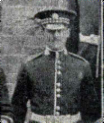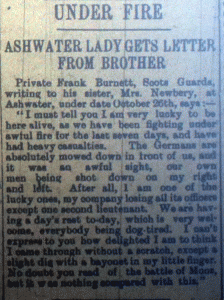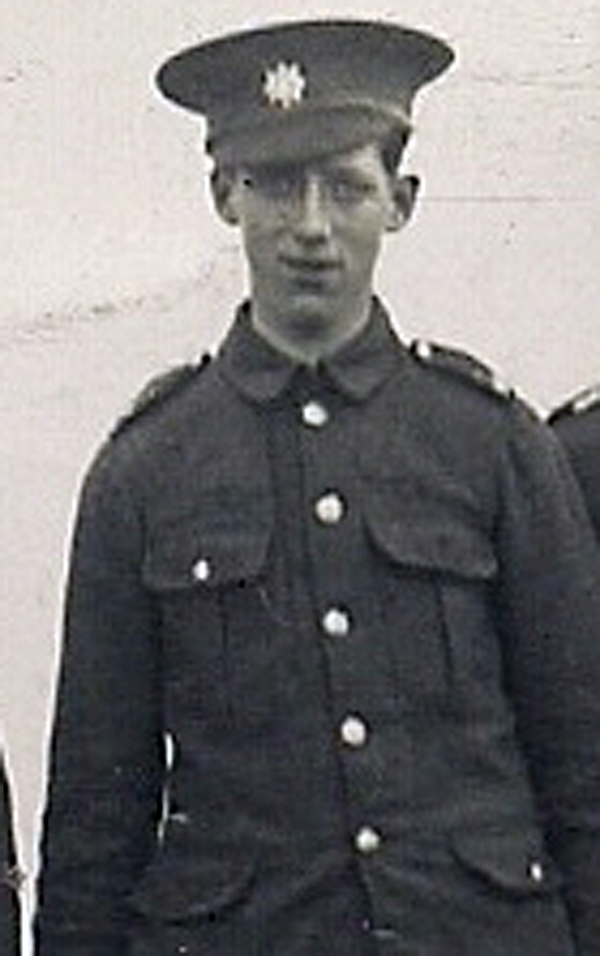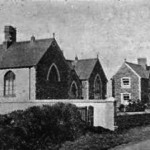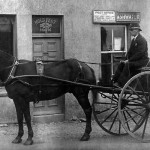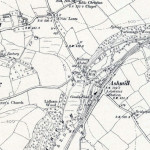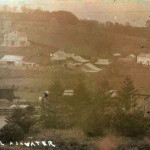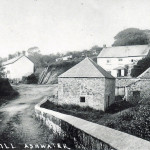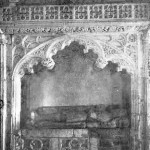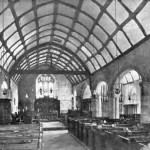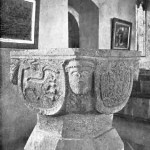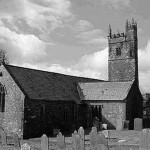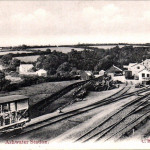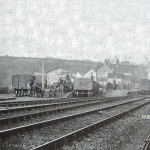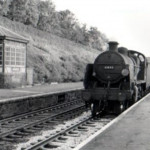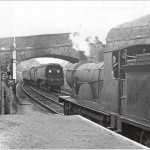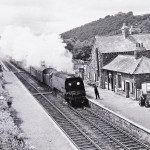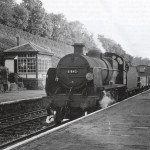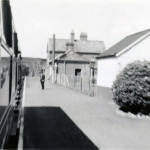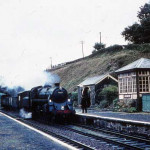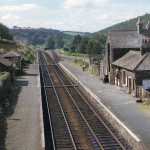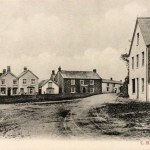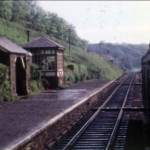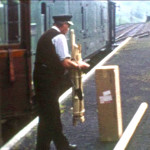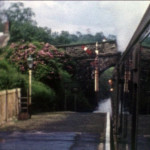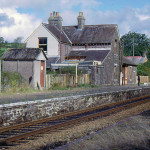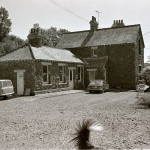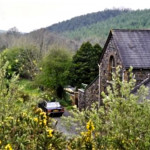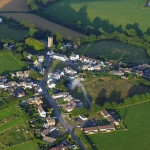.
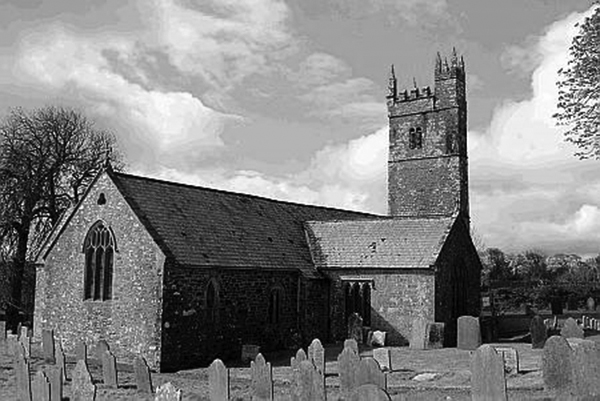
Ashwater is a village and civil parish in the Torridge district of Devon and is in the Hundred of Black Torrington and the Deanery of Holsworthy. The
soil is chiefly clay; subsoil, clay. In the Doomsday Book, 1086, the name is given as Aissa. In 1270 it was Esse Water and by 1281 had become Assewalteri. The two Manors of Aissa and Hindefort became Ashwater Barton and Henford Barton. As well as the village itself, the parish includes several hamlets, such as Henford, Quoditch and part of Ashmill, which lies directly on the boundary between Ashwater and Broadwoodwidger parishes. It is close by the Cornish border and is about 10 miles north of Launceston. Fairs for cattle were held here on the first Tuesday in May, and the first Monday after the 1st of August.
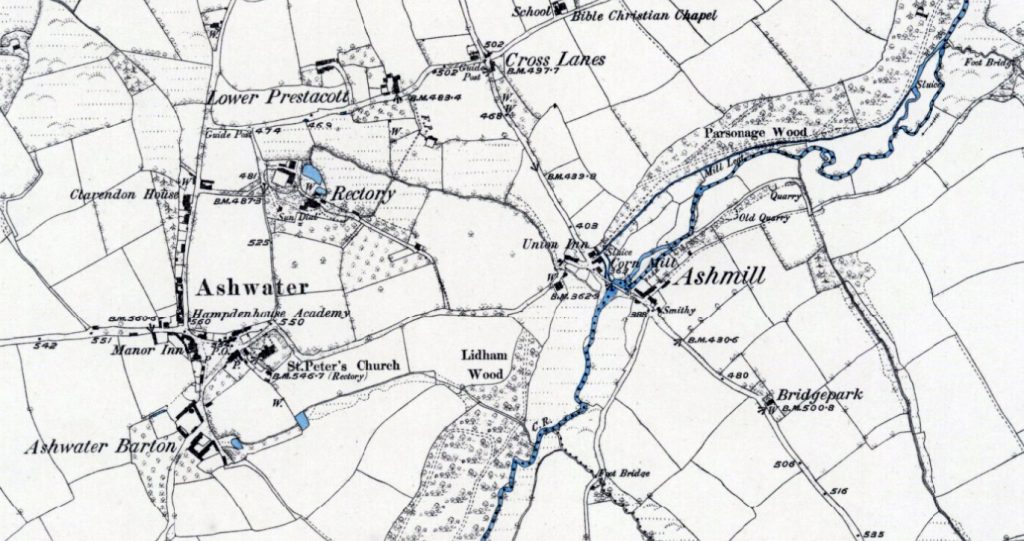
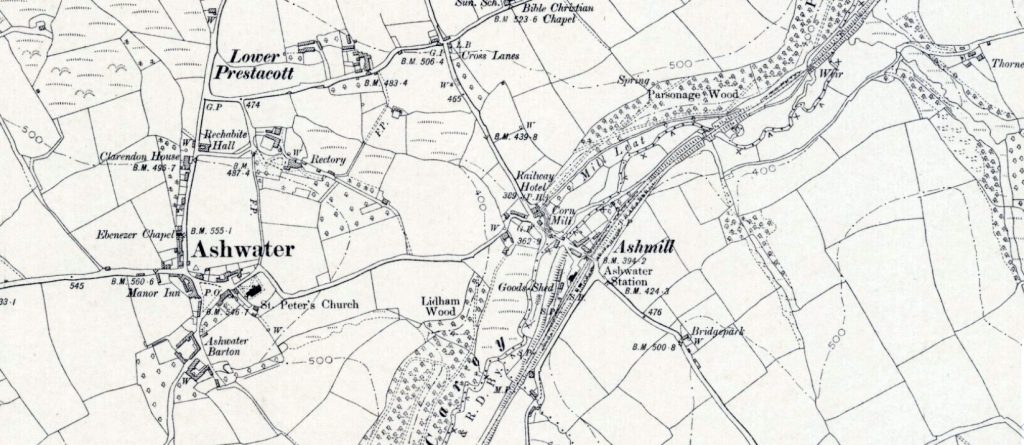
Map of Ashwater in 1907
St Peter ad Vincula Church (from Some Old Devon Churches By J. Stabb)
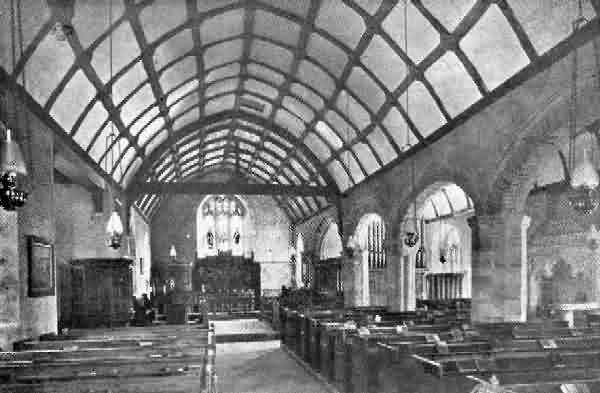
The church dedicated to St. Peter, is thirteenth century, with fifteenth-century windows, with an arcade that mixes the two periods. The decorated font is Norman, described by Mee as “a great treasure“. The church consists of chancel, nave, south aisle with priest’s door, north transept or chapel, north porch and west tower with five bells. It is probable that the “north transept” was not a transept but a chapel. There is evidence of its having been built up against the nave, and it does not seem to have been part of the original building. The reredos, parclose screen, and choir stalls are all modern, of carved oak work of good design. The roofs have finely carved bosses and beams. In the south aisle is a monument with two recumbent figures; a male and a female. The male figure is clad in armour with helmet, the visor open. The following description of this monument is given in the Holsworthy Ruridecanal Magazine, 1904: “Lysons, the West Country antiquarian, says it is the tomb of the last of the Carminows. The Carminows took their name from Carminow Barton in Mawgan Parish, Cornwall. They were a great family and owned also the Manor of Boconnoc, Tintagel, Hornacott in Tamerton, and Ashwater. The last male Carminow was called Thomas, and the writer believes that the effigies are of him and his wife. The shield by the head of the knight is the shield of the Carminows, a bend or on a field axure with a label of three showing that was a shield of an eldest son. Thomas Carminow died in 1442 on the Wednesday before Christmas Day. He left two daughters (1) Joan who married Sir Thomas Carew and inherited Ashwater Manor which remained in the family until Sir Peter Carew sold it to the Carys of Torre Abbey. (2) Margaret who married Sir Hugh Courtenay. Sir Hugh was killed either at or soon after the Battle of Tewkesbury (1471) where he fought for the Red Rose [i.e., Lancastrians]. His son was afterwards Earl of Devon. If you look at the cusping of the canopy over the effigies you will see two shields, carved on the underside. One of these is the shield of Courtenay impaling Carminow and is the shield therefore of Sir Hugh and Margaret his wife. The other shows the Carminow coat of arms impaled by some other which is now defaced and illegible, but an easy and plausible guess makes it the Carew arms, the whole shield being that of Sir Thomas Carew and Joan his wife. In part, the two shields on the cusping seem to correspond with the two shields on the east window of the south aisle which I described last month. The two sisters Joan and Margaret with their husbands rebuilt the south aisle, what more likely than that they should commemorate their father and mother by erecting this finely sculptured tomb. I am bound to confess that a late writer, Mr Hamilton Rogers, in a book on the monumental effigies of Devon makes a different guess, and thinks it is probable that the tomb is that of Sir Hugh Courtenay and Margaret his wife and that it was placed there by Margaret herself, but I cannot say that his reasons are very convincing. Sir Hugh is called Sir Hugh of Ashwater in some old records, but he is also called Sir Hugh Courtenay of Buconnoc, and it is clear at any rate that not he but Sir Thomas Carew and Joan were the inheritors of this manor. Joan afterwards married Halmathe Malenory who lived at Ashwater. Margaret married a second husband, William Bottreaux. The carving is worked in Beer stone from the ancient Beer quarries near Seaton. It is said that the sculptures have been so ill-treated. Much of the canopy has been destroyed, and the male figure has been broken across evidently by some people who were bent on finding out whether there was anything of value underneath. It was richly painted at first, but whitewash has covered it with many coats, only here and there where this has scaled off can this be detected. The wooden carving which is now placed above the canopy is of a later date and has nothing to do with the monument or with the Carminow family.”

At the feet of the figures is a mutilated carving of the Holy Trinity of the same design as that at Plympton St. Mary. In the east window of the aisle are coloured shields, the left hand has the arms of the Carew family impaling the arms of Carminow; Sir Thomas Carew and his wife Joan who was a Carminow. The right-hand shield has on one side the arms of the Courtenay family quartered with the De Redvers arms, the other side is blank, but probably has Carminow arms impaled and the shield would represent Sir Hugh Courtenay and his wife Margaret Carminow. Above the shields is the letter “M”, this may be the monogram of Sir H. Malenory, but I think it more likely that this end of the aisle was used as a Lady Chapel and that it is the monogram of the Blessed Virgin. Some old stones near the monument were found during a restoration of the church, built in one of the walls, they evidently formed part of a Norman doorway, probably the south (the north is Norman), and old portions of the original building. On the south wall is a large representation in plaster of the Royal arms dated “C. R. 1638“.
There is a fine Norman font with faces or masks at the corners, it is constructed of some stone with the appearance of granite, but is certainly not of that material, it may be a stone of volcanic origin found in Cornwall. The font and north doorway are the only remains of Norman work in the church. The church was struck by lightning in 1699, the present pinnacles were erected at that restoration. There is a modern rood beam with a cross, and there are some very good modern bench-ends.
There are six bells in the church tower, with various dates from 1671, one from 1772, one undated and one dated 1929. Bell number four (1772) is inscribed SAMPSON BEALE, C.W., this is possibly the son of Sampson Beale one of the oath-takers in 1723. The last was added in 1929. Elsewhere he records that 1772 saw the recasting of the Church Bells and number 5 bell was inscribed ‘I call the quick to Church, the dead to grave Thomas Melhuish Rector– IP’”
Between 1864 and 1897 a great deal of ‘restorative’ work was throughout the church and at that time the bells were rehung. The tower was the venue for a bell-ringing competition for King George III’s jubilee in 1809. Ashwater’s bells rang for Waterloo; local men watched from the tower for enemy bombers in World War II; the bells rang Victory 3 peals at War’s end and again to mark the Millennium. The bells and the tower feature in a song that dates from the time of George III’s Golden Jubilee in 1809. As has been previously stated, the church was restored in 1876 at a cost of 1,200; in 1889 it was further restored, when the chancel was rebuilt, new-roofed with oak and re-floored and carved oak choir stalls and other fittings erected: a fine carved oak pulpit carried out by John Northcott. The register dates from the year 1558 and records the baptism here of the father of General Monk, afterwards Duke of Albemarle.
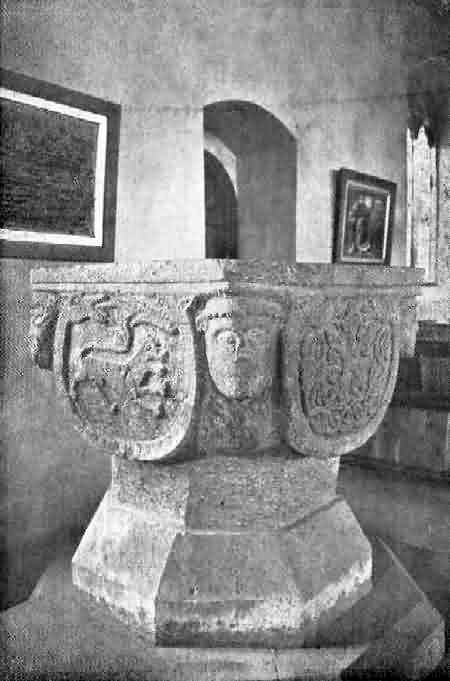
The Bible Christian Chapel was built in 1865 just outside the village, on land provided by a local farmer. The interior of the Chapel was renovated in 1997 but original features, such as the pews with doors, were retained. Until the Deed of Union in 1932 there were several branches of the Methodist Church. The Chapel is now closed.
Ashwater’s fallen from both World Wars
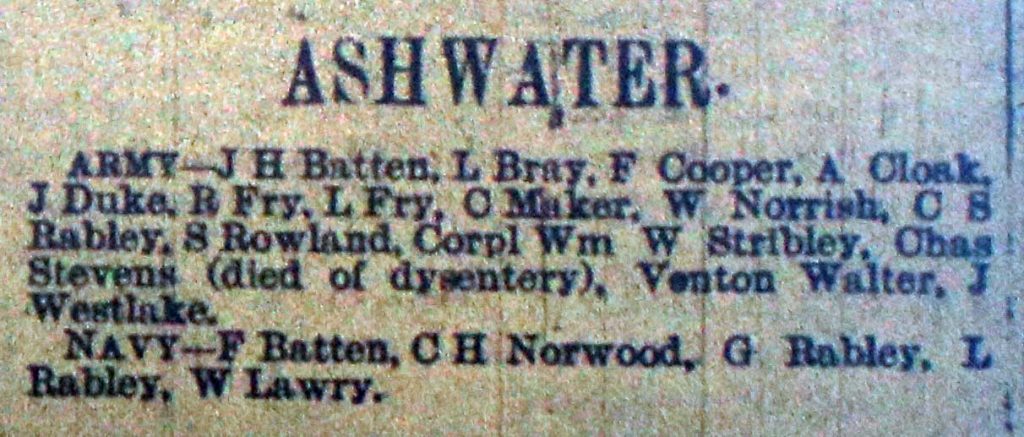
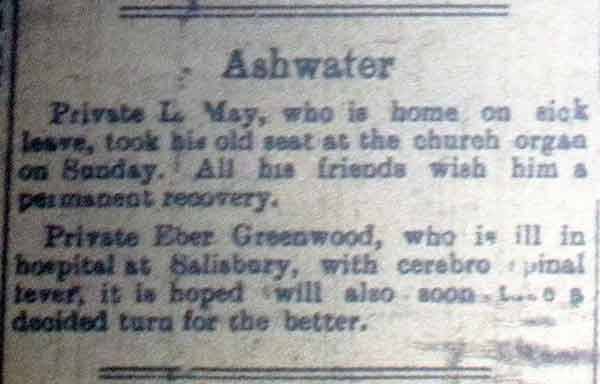
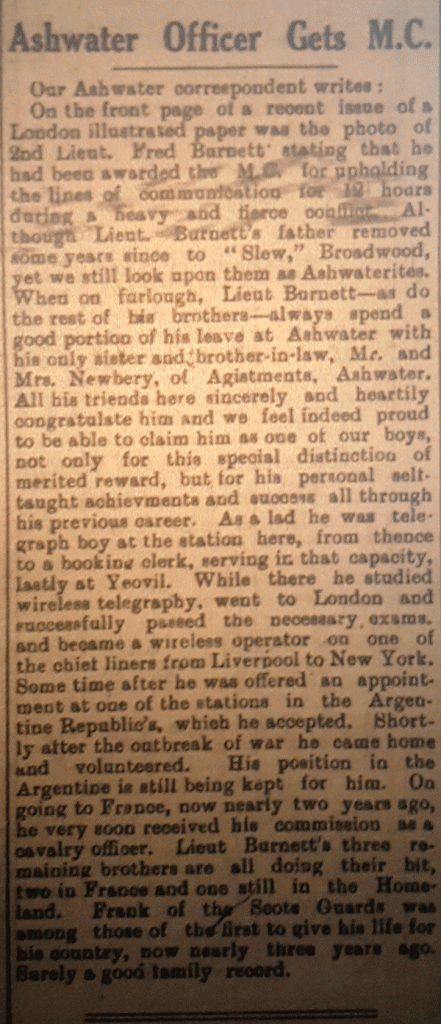
1914 – 1918
Samuel BOUNDY
Samuel was born in 1891 at Clawton to William and Jane Boundy. He enlisted with the Duke of Cornwall’s Light Infantry (Regimental No. 24140) as a Lance Corporal serving with the 10th Battalion. He was killed during the First Battle Of Bapaume (part of the Battle of the Somme) on March 25th, 1918 aged 27. His body was never identified but he is commemorated on the Arras Memorial, Pas de Calais, France, Bay 6. He is also commemorated on the Ashwater War Memorial.
Leonard Heywood BRAY
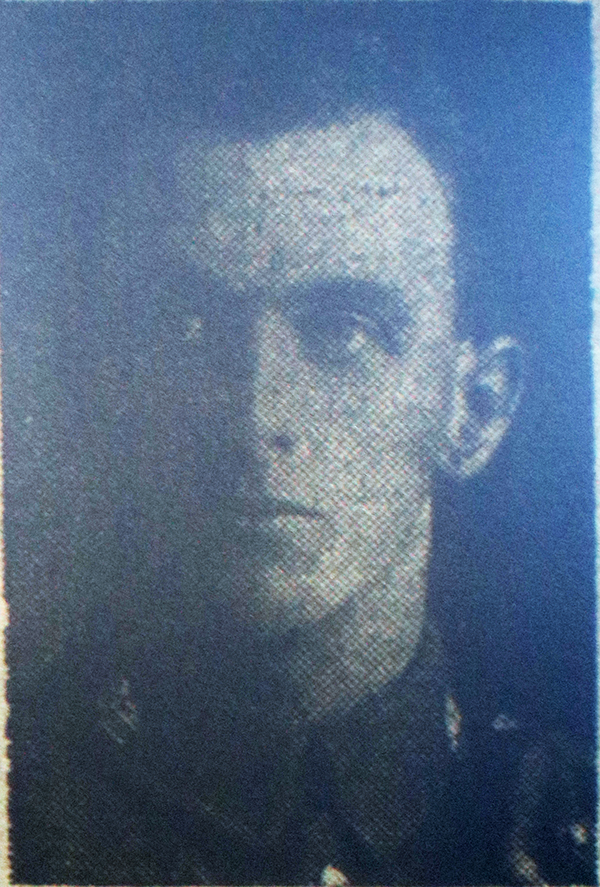
Leonard was born in 1894 to Thomas and Emma Bray at Landue Mill, Lezant. His Father was an Agricultural Worker. By 1911 Thomas had passed away and the family had moved to Tredown Cottages, Lezant with Leonard working as a Farm Labourer. He enlisted at Holsworthy with the Royal North Devon Hussars Yeomanry as a Private (Regimental No. 930) with the 1/1st although. At the time he was residing at Beaworthy, Devon. The 1/1st were with the 2nd South Western Mounted Brigade, who in September 1915 left Colchester for Liverpool. On September 24th it boarded ‘RMS Olympic’ and sailed the next day. It arrived at Mudros on October 1st and then on to Suvla Bay. The regiment landed in Gallipoli on October 9th and was attached to the 11th (Northern) Division (digging trenches). In November it was in the firing line, attached to the 2nd Mounted Division and 53rd (Welsh) Infantry Division. It was during this November fighting that Leonard was killed in action on November 29th, 1915 aged 22. He was interred in the Green Hill Cemetery, Turkey. Plot I. Row A. Grave 19. He is commemorated on the Ashwater and Lezant War Memorials. At the time of his death, his Brother, Frederick Bray, was living at Barton Cottages, Dunterton, Tavistock.
Francis BURNETT
Frank was born in 1892 to John and Sarah Ann Burnett at Ashwater. His father worked as a gamekeeper. In 1911 he is living with his brother-in-law John Newbery at Ashwater and working as a Timber Sawyer. He enlisted at Devonport joining the Scots Guards (Regimental No. 8578) on March 19th, 1913 serving with the Expeditionary Force and taking part in the First Battle of Ypres. In October 1914 he wrote home to his sister, Mrs Newbery at Ashwater and he stated how lucky he felt coming through seven days of heavy fighting alive. “My company (‘C’ company) lost all its officers except one second lieutenant.”
With such heavy losses in his company, it was no surprise to learn that Frank soon rose to the rank of Lance Corporal and was whilst serving with the ‘C’ Company of the 2nd Battalion when he was killed in action during an attack on the German trenches on the Fromelles-Sailly Road on December 18th, 1914. His body was never identified but his name is commemorated on the Ploegsteert Memorial, Panel 1 and on the Broadwoodwidger Church Roll of Honour.
18.12.14 Report by Captain G.H. LODER (who was later to lead the Christmas Truce of 1914):
On Friday, Dec 18th I was ordered by Captain PAYNTER to lead an attack on the German trenches with 2 Coys of the 2nd Bn Scots Guards. The RIGHT of the attack to rest on the FROMELLES – SAILLY Road, the LEFT of our line approximately 400 yards E of this point where the border Regt joined our lines in No 2 subsection.
This Regt was to carry on from this point. I was ordered to meet Captain ASKEW and arrange details with him at 3:45 pm. The attack was timed for 6 pm. It was arranged that at 6 pm the men should be posted over the parapet and to crawl out under the wire fence and lie down. When this was done I was to blow my whistle and the line was then to move forward together and walk as far as they could until the Germans opened fire and then rush the front line trenches. Having reached the trench I was to try and hold it if occupied, and if unoccupied to push on to the second line. The men carried spades and sandbags. F Coy Captain Sir F FITZWYGRAM, LF Captain H TAYLOR. At about three minutes to 6 pm the men were hoisted over the parapet and lay down. I blew my whistle as loud as I could but, owing to the noise of our gunfire, it appears that it was not generally heard. F coy being on the RIGHT and LF on the LEFT we began to move forward. After advancing about 60 yards I could see that in several places the line was not being maintained; some men moving forward faster than others. I could see this by the flash from the guns. I collected the men nearest to me and I found myself practically on the parapet before the Germans opened fire.
There was no wire entanglement at this point. We bayoneted and killed all the Germans we could see in the trench and then jumped down into it. There was a certain amount of shouting and confusion. I could not see far to my RIGHT or LEFT or tell what was happening on either flank. The position of the trench in which I found myself was not traversed for a distance of at least 25 yards. I ordered the men to make firing positions in the rear face of the trench. This was not easily done owing to the depth of the trench. I also told off some men to watch the flanks and, if the enemy appeared, to make traverses. I remained in the trench some time, about one hour, and then thought I had better try and see what had happened at other places in the line. I got out of the trench, which I left in charge of Lieut SAUMAREZ, and told him to hang on. I found it impossible to get any information but could see a good many dead bodies lying close to the German parapet.
I decided to come back to report to Captain PAYNTER and explain what the situation was and suggest that, if the trench was to be held, reinforcements would have to be sent up. This he reported to the Brigadier as it then became apparent that the attack of the border Regt had failed and also that 2 Coys RIGHT had only succeeded in getting into the trench in a few places he was ordered not to send forward the remaining two Coys which were in reserve. I was then ordered to organise a digging party to sap to the German trench. This was attempted but, owing to continuous German fire, it soon became clear that the distance, 180 yards, was too much. About 3 am Lieut WARNER and a party of 10 men were led forward by Corporal JONES to the section of the German trench which was still intact. He reached it alright and found Lieut SAUMAREZ wounded [in the hand and that a stretcher was sent out and, with great difficulty, Lieut SAUMAREZ was removed]. Lieut WARNER was ordered to withdraw. Just before dawn, he accomplished this without loss. Shortly after the attack was launched Lieut OTTLEY and a party from G Coy were sent up to reinforce Lieut HANBURY TRACY. While at the head of his men he was mortally wounded before reaching the German trench and the rest of the party don’t appear to have been able to reach the trench. Corporal MITCHELL, with great courage, brought back Lieut OTTLEY (Lieut OTTLEY was awarded a DSO).
During this attack, the Germans don’t appear to have used any bombs or hand grenades. The crossfire from well placed German Machine guns played a big part and this accounts for our very heavy casualties amounting to nearly 50%, about 180 men being killed or wounded. Among the officers:
Killed: Captain H TAYLOR, LF Coy; Lieut Hon HANBURY TRACY F Coy
Missing: Lieut NUGENT LF Coy (believed to have been killed)
Wounded: Lieut SAUMAREZ LF Coy; Captain Sir F FITZWYGRAM F Coy
Died of wounds: 2/Lieut OTTLEY G Coy
Captain LODER was the only officer who returned unwounded. Pte CLARKSON has an Iron Cross which he found on a dead German officer.
It’s only anecdotal but in a BBC programme on the Christmas Truce, it said that there was a mass burial on that day. This would suggest (no more than that) that those burials were of men, including Frank from that same raid.
Cyril James Fry DOCKETT
Cyril was in 1895 in Ashwater to Eber and Fanny Dockett. He enlisted in 1915 with the 2nd/15th County of London Battalion (the Civil Service Battalion, The Prince of Wales’ Own Civil Service Rifles ) (Regimental No. 532278) as a Private. The 2/15th become part of the 60th (London) Division and finally went to France in 1916, serving at Vimy before moving to Salonika in the winter of 1916. In 1917 it moved to Palestine,and took part in the fighting for Gaza and Jerusalem. Cyril died of his wounds sustained during the Capture of Jericho on February 21st, 1918 aged 23. He was interred in the Jerusalem War Cemetery, Israel, S 66. He is also commemorated on the Ashwater War Memorial. At the time of his death, Cyril was recorded as living in Thornton Heath.
The Capture of Jericho occurred between February 19th and 21st,1918 to the east of Jerusalem beginning the Occupation of the Jordan Valley during the Sinai and Palestine Campaign of the First World War. Fighting took place in an area bordered by the Bethlehem–Nablus road in the west, the Jordan River in the east, and north of a line from Jerusalem to the Dead Sea. Here a British Empire force attacked Ottoman positions, forcing them back to Jericho and eventually across the Jordan River.
William George GLIDDON
William was born in 1888 in Holsworthy to Samuel and Elizabeth Gliddon. He enlisted as a Private in 1914 with the 2nd/5th Battalion of the Royal Warwickshire Regiment (Regimental No. 203239). Serving as part of the 182nd Brigade of the 61st Division his Battalion were fighting in the Battle of Cambrai when William was killed in action on December 3rd, 1917 aged 29. His body was never identified but his name is commemorated on the Cambrai Memorial, Panel 3. He is also commemorated on the Ashwater War Memorial.
The Battle of Cambrai (Battle of Cambrai, 1917, First Battle of Cambrai and Schlacht von Cambrai) was a British attack followed by the biggest German counter-attack against the British Expeditionary Force (BEF) since 1914. After initial gains and as early as November 23rd, the German command felt that a British breakthrough would not occur and began to consider a counter-offensive. The German attack began at 7:00 a.m. on 30 November; almost immediately, the majority of III Corps divisions were heavily engaged. At Bourlon, the Germans suffered heavy casualties. Despite this, the Germans closed and there was fierce fighting. British units displayed reckless determination; one group of eight British machine guns fired over 70,000 rounds in their efforts to stem the German advance. The concentration of British effort to hold the ridge was impressive but allowed the German advance elsewhere greater opportunity. Only counter-attacks by the Guards Division, the arrival of British tanks and the fall of night allowed the line to be held. By the following day, the impetus of the German advance was lost but pressure on December 3rd led to the German capture of La Vacquerie and a British withdrawal on the east bank of the St Quentin canal. The Germans had reached a line looping from Quentin Ridge to near Marcoing. The German capture of Bonavis ridge made the British hold on Bourlon precarious. On December 3rd, Haig ordered a partial retreat from the north salient and by December 7th, the British gains were abandoned except for a portion of the Hindenburg line around Havrincourt, Ribécourt and Flesquières. The Germans had exchanged this territorial loss for a slightly smaller sector to the south of Welsh Ridge. Source Wikipedia
William HAM
William was born in 1882 in Clawton to Richard and Elizabeth Ham. He enlisted with the 1st/ 5th Battalion of the Duke of Cornwall’s Light Infantry (Regimental No. 240562) as a Private. He was killed in action during the Operations on the Ancre on February 8th, 1917 aged 35. His body was never identified but he is commemorated on the Thiepval Memorial, Pier and Face 6 B. He is also commemorated on the Ashwater War Memorial.
John Thomas JORDAN
John was born in 1898 at East Statfold, Ashwater to John and Mary Jordan. He enlisted with the Infantry Battalion of the Machine Gun Regiment (Regimental No. 148549) serving as a Private with 150th Company. He was killed in action on May 5th, 1917 during the Second Battle of Arras, aged 19. His body was never identified but he is commemorated on the Arras Memorial, Pas de Calais, France, Bay 10. He is also commemorated on the Ashwater War Memorial.
William John MOORE
William was born in 1898 at Milton Damerell to Barney and Bessie Moore of Quoditch, Ashwater. He enlisted with the 115th Battery, the 25th Brigade, the Royal Field Artillery as a Private (Regimental No. 216141). He was killed in action on December 5th, 1917, aged 20. The 25th Brigade was originally formed with 113th, 114th and 115th Batteries, and attached to 1st Infantry Division. He is commemorated on the Ashwater War Memorial.
Albert Owen PERKIN
Albert was born in 1892 in Holsworthy to Richard and Betsy Perkin. He enlisted with the 1st/4th Battalion of the Oxford and Bucks Light Infantry as a Private (Regimental No. 6107). He was killed when a shell burst in his trench North of Ovillers on August 25th, 1916 aged 24. He was interred in the Pozieres British Cemetery, Ovillers-La Boisselle, Somme, France, Plot 4, Row H, Grave 6. His body was exhumed from Map Ref:- 57d X.2. on 12/05/1919 (original Grave marked with Battalion Cross), then reburied at his current resting place. He is also commemorated on the Ashwater War Memorial. On his record, it was stated that he was the husband of Plena G. Westlake (formerly Perkin), of Highway, Jacobstow, St. Gennys but at the time of his death, the couple were living in Ashwater.
From the Battalion War Diary:
Some hostile shelling. Otherwise very quiet throughout the day. B Coy relieved D on left. D moving into Reserve, and A moving up into Support 1/5 th GLOSTERS relieved 1 st BUCKS on our left. Orders received that consolidation only required, so no further attack made on point 79. Hostile artillery very active on our right front Coy, doing much damage to trenches around 48. Patrols during the night got well up to trench 79-91 and reported enemy digging energetically, and apparently the garrison of the trench in many cases, not in the actual trench, but in shell holes just behind.
Samuel PETHERICK
Samuel was born in 1886 at Ashwater to Arthur and Mary Petherick. He enlisted in 1914 with the 1st/4th Battalion of the Devonshire Regiment eventually rising in the ranks to Sergeant (Regimental No.203658). He died on January 24th, 1919 aged 33. He was interred in the Kantara War Memorial Cemetery, Egypt, E. 319. He is also commemorated on the Ashwater War Memorial.
Charles STEPHENS
Charles was born in 1893 at Broadwoodwidger to William and Millicent Stephens. He enlisted with the Royal North Devon Hussars (Regimental No. 931) serving with the 1st/1st as a Private. He died of dysentery on October 21st, 1915 aged 22. He was interred in the Alexandria (Chatby) Military and War Cemetery, Egypt, F. 5. He is also commemorated on the Ashwater War Memorial. On his death, his mother was living at Whiddon, Ashwater.
William James TUBB (with thanks to Alan Tubb)
William was born 19th July 1895 at Davidstow to John Henry and Mary Tubb. William enlisted in the Devonshire Regiment as a Private (Regimental No. 5036). He served with the 1st/6th Battalion. He was killed in action on March 8th, 1916 aged 20. His body was never identified but he is commemorated on the Basra Memorial, Iraq, Panel 11. He is also commemorated on the Ashwater War Memorial. At the time of his death, his parents were living at No. 4, Bridge Park, Ashwater.
At the end of 1915, the 1/6th were sent to Mesopotamia and they arrived at Basra on January 3rd 1916. Marching 300 miles upcountry through swamps, marshes and deserts, they suffered sickness and attacks from local Arabs before reaching Orah. From here, in early March, they launched an attempt to relieve the besieged garrison at Kut el Amara. Tantalisingly, they were within sight of Kut when a bungled artillery bombardment warned the Turks of their advance and heavy shell and machine-gun fire forced them to retreat. The 1/6th lost 201 casualties including William and were congratulated on their bravery.
1939 – 1945
Herbert (Bert) George BAZLEY
Bert was born in September 1920 in St. Germans to Edwin and Ethel Bazley. He enlisted with the Royal Navy (Service No. D/JX 135256) as a Telegraphist serving aboard HM Submarine Seahorse. At the onset of World War II, Seahorse was a member of the 2nd Submarine Flotilla. From August 23rd–26th, 1939, the 2nd Submarine Flotilla transferred to its war base, Dundee and Blyth. On December 26th,1939 she sailed from Blyth for patrol off the east coast of Denmark. Four days later she shifted position to the entrance of the Elbe. She did not return on her due date of 9 January 9th, 1940. It was first thought that she had been mined but German records, examined after the war, suggest she was the victim of the German First Minesweeper Flotilla which reported a sustained depth charge attack on an unidentified submarine on 7 January 7th, 1940. It is however also possible that she was rammed and sunk by the German Sperrbrecher IV/Oakland south east of Helgoland on December 29th, 1939 Bert is officially listed as being killed on January 12th, 1940 aged 25. His body was never recovered but he is commemorated on the Plymouth Naval Memorial, Panel 39, Column 3, as well as on the Ashwater War Memorial. At the time of his death his parents were living in Ashwater.
Vernon Francis BURNETT
Vernon was born in the Newton Abbot area in the September Quarter of 1920 to George and Mary Burnett. He enlisted with the RAF VR, 612 Squadron (Service No. 1311994) as a Sergeant. He was reported as being killed when his plane failed to return to base after a mission on August 4th, 1943 aged 22. His body was never recovered but he is commemorated on the Runnymeade Memorial, Surrey, Panel 144, as well as on the Ashwater War Memorial.
Towards the end of 1942, the 612 Squadron began to convert to the Leigh Light Wellington, and operations off the Norwegian coast began, but in February the Wellingtons were removed and given to Nos.172 and 179 Squadrons instead. No.612 finally converted at Davidstow Moor in April-May 1943. The last Whitley operation was flown in June. For the rest of 1943 and the early months of 1944, the squadron focused on night sorties over the Bay of Biscay, hoping to attack German U-boats as they were crossing the bay. Vernon’s flight took off at 23:15 with Wellington XiV MP654/J but returned to base with engine trouble and landing at 00:48 on August 4th. Took off with a new aircraft (Wellington XIV HF128/P) at 01:48 and but then failed to return.
Crew missing in action: Sergeant Vernon Francis Burnett (RAF VR, 1311994), Warrant Officer John William Jones (RAF VR, 1154432), Flight Sergeant Jack William Low (RAF VR, 1335464), Sergeant Eric Middleton (RAF VR, 1312412), Flight Sergeant William Henry Smitham (RAF VR, 1108739), Sergeant Horace Wharton (RAF VR, 1073453).
Percival LASHBROOK
Percival was born in Ashwater in the March Quarter of 1920 to Daniel and Florence Lashbrook. Percival enlisted as a Private with the 1st/6th Battalion of the Queen’s Regiment (the West Surrey) (Regimental No. 5621538) serving with the 131st Infantry Brigade, which was a part of the 44th (Home Counties) Infantry Division. The division was later sent to North Africa in mid-1942 to join the British Eighth Army and fought in the Battle of Alam el Halfa where Percival was killed in action on October 24th, 1942 aged 22. He was interred in the El Alamein War Cemetery, Plot 29, Row C, Grave 21. He is also commemorated on the Ashwater War Memorial. At the time of his death, he is recorded as being the husband of Katie Lashbrook, of St. Just in Penwith, Cornwall.
Derek Waters STRIBLEY
Derek was born in Ashwater in the June Quarter of 1923 to William and Mabel Stribley of Ashwater. He enlisted with the RAF VR, 77 Squadron (Service No. 1605487) as a Flight Sergeant. He was killed when his plane crashed at Tiestelsen on October 22nd, 1943 aged 20. He was interred in a collective grave at the Hanover War Cemetery, Niedersachsen, Germany, grave 11. F. 3-10. He is also commemorated on the Ashwater War Memorial.
From the official accident report:
“Pilot, John Barber, took off at 18.02 hours in Halifax MkIII JD121 KN-O from Elvington. Yorkshire for a raid on the city of Kassel, in Germany. The aircraft crashed at Tiestelsen, 9 kilometres south-east of Brakel – the cause of loss not being established. The entire crew were lost.”
The crew were: –
Flying Officer John Stuart Barber (Pilot)
Sergeant Derek Waters Stribley (Flight Engineer)
Sergeant Roy Owen Hand (Navigator)
Flying Officer Eric Raymond Price (Bomb Aimer)
Sergeant Ivor Melvyn Smith (Wireless Operator/Air Gunner)
Sergeant John Pretsell (Air Gunner)
Warrant Officer Class II Harry Arthur Weber RCAF (Air Gunner)
“Theirs was one of 45 aircraft which failed to return from this operation.”
Kelly’s Directory entry for Ashwater 1902
Post & M. 0. O., S. B. & Annuity & Insurance Office. Richard Hocking Moon, sub-postmaster. Letters received from Seaworthy R.S.O. North Devon, at 8.30 a.m.; dispatched at 5.10 p.m. Postal orders are issued here, but not paid. The telegraph office is at the Railway station Wall Letter Box, Ashmill, cleared at A 4.45 p.m School Board of 5 members was formed May 1, Sydney Dockett, clerk to the board 1871; Board School (mixed) (formerly a chapel), it will hold no children; average attendance, 80; Charles Alfred Habley, master; Miss Mary Bromell, sewing mistress Board School, Hunscott (mixed), for 50 children average attendance, 36; Miss A. Mitchell, mistress. Railway Stations. Ashwater, Edward Charles Liley, station master. Dunsland Cross, William Pincombe, station master.
Marked thus * receive letters thro’ Brandis Corner R.S.O. Marked thus **receive letters thro’ Tet-cott, Holsworthy. Marked thus *** received letters thro’ Clawton, Holsworthy.
Beare Samuel, Balhatchet
Melhuish Rev. George Douglas M.A. Rectory
Spurin Roscoe Charles, Pristacott
COMMERCIAL.
Badcock William, farmer, Arscott
Baker Thomas, mason, Pristacott
*Ball James, farmer, Muckworthy
*Balsdon James, farmer, Muckworl ,
JBarrett Wm. G. farmer. Hole
Bray Arthur, farmer, Heath
*** Bromall Chas. cowkpr. Beech cot
Bromell Wm. farmer, East Venn
** Clifton Richard, carpenter, Enford
** Clifton William, carpenter, Enford.
Cole Amos, farmer, Quoditch
Cole Arscott, blacksmith, Spry’s shop
Cole Wm. butcher & farmer.Pristacott
* Corbett Gerald Vincent, frmr. Forde
Cotton Mark, farmer, Langaford
Crocker Frank, farmer, Grendiswrthy
Crocker Humphrey, farmer, Grendisworthy
Dockett Eber John, tailor & outfitter
Dockett John & Son, ironmongers
Down Thomas, Eailway inn
Dufty Thos. & Son, farmers, Barton
Ellicott Thomas, farmer.Larkworthy
Facy Alexander, farmer, East Down
Fowler William, farmer, New England
** Friend Ann (Mrs.), farmer, Henford Barton
** Friend Hichard, farmr.Henford Bartn
** Friend Wm. farmer, Henford Barton
Fry Samuel, blacksmith
Fry Thomas M.B.C.V.S. veterinary surgeon, Pristacott
Furse Jn. Hy. & Chas. frmrs. Qnodtch
Furse John, farmer, Westdown
Furse William, farmer, Quoditch
*Gerry William, frmr. Morecqmbe gt
Hamly Fras. carpenter & bldr. Pristacott
Hamly John, farmer, Pristacott
*** Hatch Emanuel, farmer, Burrow
Higgs H. corn & seed merchant, Railway station ; office, Holsworthy
Hill John, farmer, Blagaton
Hill John, farmer, Hay
Hill Samuel, farmer, Pristacott
Jones John Jas. farmer, Larkworthy
** Jones Richd. Wickett. farmr. Enford
* Jordan John Wood, farmer
Jordan Richard, farmer, Swingdon
Kneebone William, farmer, Pristacott
Lewis George, farmer & cattle dealr. Moor Hay
Lightfoot Albert James, Manor inn; farmer & posting establishment; good accommodation for tourists, cyclists, hunting & fishing gentlemn
Madge William Walker, farmer, Blagdon house
Mayne John, boot & shoe maker
*** Metherell Emanuel, yeoman, Buckhrn
Moon Richard Hocking, grocer & seed merchant. Post office
Murley Richard, farmer
Nancekivell Saml. farmer, Benson
Nancekivell William Beale, farmer & cattle dealer, Pristacott
Northcott John, ecclesiastical & architectural wood carver
Northcott Thos. carpentr. & whlwrght
Oliver Frederick, boot maker
** Oliver William, farmer, Enford
Palmer John, farmer, Langford
Parsons John, farmer, West Venn
*Parsons William, farmer, Muckwrthy
Pearce Francis, farmer, Pristacott
Rabley Charles A. registrar of births & deaths & vaccination officer for the sub-district of Ashwater, Holsworthy union
Skinner Samuel, fanner, Bradden
Sluggett Stephen, farmer, Langafd. la
Smale Reuben, carpenter, Quoditch
* Smith William, farmr. Muckworthy
*** Spry John, jun. farmer, Clawford
Spry John, carpenter & deputy registrar of births & deaths for Ashwater sub-district, Holsworthy union
Spry John, sen, farmer, Lucroft
Spry Philip, butcher
Spry William, blacksmith, Quoditch
Spry William Shadrach, farmer, Quoditch
*** Squires Joshua, farmer, Hunscott
*** Stacey John, farmer, Heggaton
Stribley Lydia (Mrs.), draper
Trick Wm. boot & shoe ma. Mount la
Vickery Thomas, farmer
Walters Henry, farmer, Berrington
* Watkins Norman, farmer, Olaw moor
*** Whitford Fdk. farmer, Sandy moor
Wood Richard, farmer, Viza
* Yelland Samuel, farmer, Middlecroft
Visits: 472

